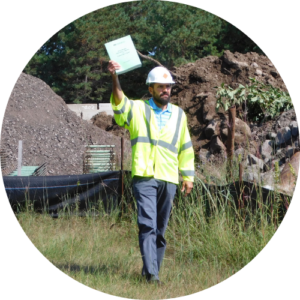This project is a finalist for the 2021 Golden GOVIT Awards in the Collaboration category. This project was completed by the Minnesota Department of Human Services & General Mills. This project was nominated by Sarah Aughenbaugh.
Concept:
The Minnesota Department of Human Services (DHS) provides essential services to Minnesota’s most vulnerable residents. One of these services, the Supplemental Nutrition Assistance Program (SNAP), helps support people’s food needs. Over 450,000 Minnesotans participate in SNAP. Monthly benefits average $110 per person. A statewide network of community-based outreach agencies employ SNAP Specialists who provide program information and application assistance.
As part of the COVID-19 response, DHS sought to increase food security through a statewide, digital campaign highlighting SNAP benefits. DHS, community partners, and SNAP participants identified campaign objectives:
• Reach newly SNAP-eligible Minnesotans impacted by COVID-19 and economic downturn
• Reduce stigma by normalizing and explaining SNAP benefits
• Emphasize available help and new ways to access support
• Ensure people have food they need, they can maintain benefits and receive SNAP
Process:
In Fall 2020, DHS partnered with General Mills on a collaborative SNAP Campaign. This joint effort leveraged General Mills’ pro-bono marketing with content expertise from DHS’ program staff, communications, and IT services. The process included:
• Developing marketing/outreach plan to reach target audience
• Designing creative content, partner toolkit, strategic social media, and digital advertisements to reach SNAP-eligible Minnesotans, driving traffic to new centralized landing webpage.
• Establishing new centralized SNAP Campaign webpage: www.mnfoodhelper.org (in English and Spanish, more languages to come)
• Creating new web-form (https://pebtsnap.state.mn.us/) directing referrals to local SNAP Specialists who provide 1:1 application assistance.
• Linking to the new application portal, www.mnbenefits.org, application portal, offering a streamlined application process, taking less than 12 minutes to complete.
Significance:
In addition to the scale of SNAP itself, the SNAP Campaign encompasses several significant elements:
• Methods: Digital marketing represents a new means of outreach and application assistance, reaching new, under-represented audiences.
• Analytics: Campaign data and other analytic insights provide means to evaluate the effectiveness of marketing messages and application outcomes.
• Reach: The Campaign reached Minnesotans in all 87 counties. It provided high-quality program access and application assistance in the face of COVID-limited in-person outreach.
• Equity: The Campaign’s statewide reach helped Minnesotans receive culturally and linguistically appropriate SNAP information and application assistance. It bridged geographic and transportation barriers facing rural outreach efforts during the pandemic.
Impact:
The SNAP Campaign was developed from October 2020-February 2021, running active paid advertisements from February 22, 2021 – July 2021. DHS has been evaluating results of campaign referrals, partner surveys, and SNAP applications to assess impacts and inform ongoing strategy. Preliminary results show promising indicators of excellence:
• SNAP Outreach grantees are on track to assist more than 17,000 SNAP applicants in 2021, a projected increase from the previous highs of 2020.
• Applicant eligibility more than tripled when comparing pre-campaign outcomes to the campaign period, indicating the benefit of targeted SNAP campaign messaging and the utility of 1:1 application assistance from trained SNAP Specialists.
• Based on these early measures of success, DHS is working to match campaign referrals to successful SNAP applications and gauge economic impact. Moody’s Analytics estimated that in 2009, during the Great Recession, every $1 increase in SNAP benefits generated about $1.70 in economic activity.














